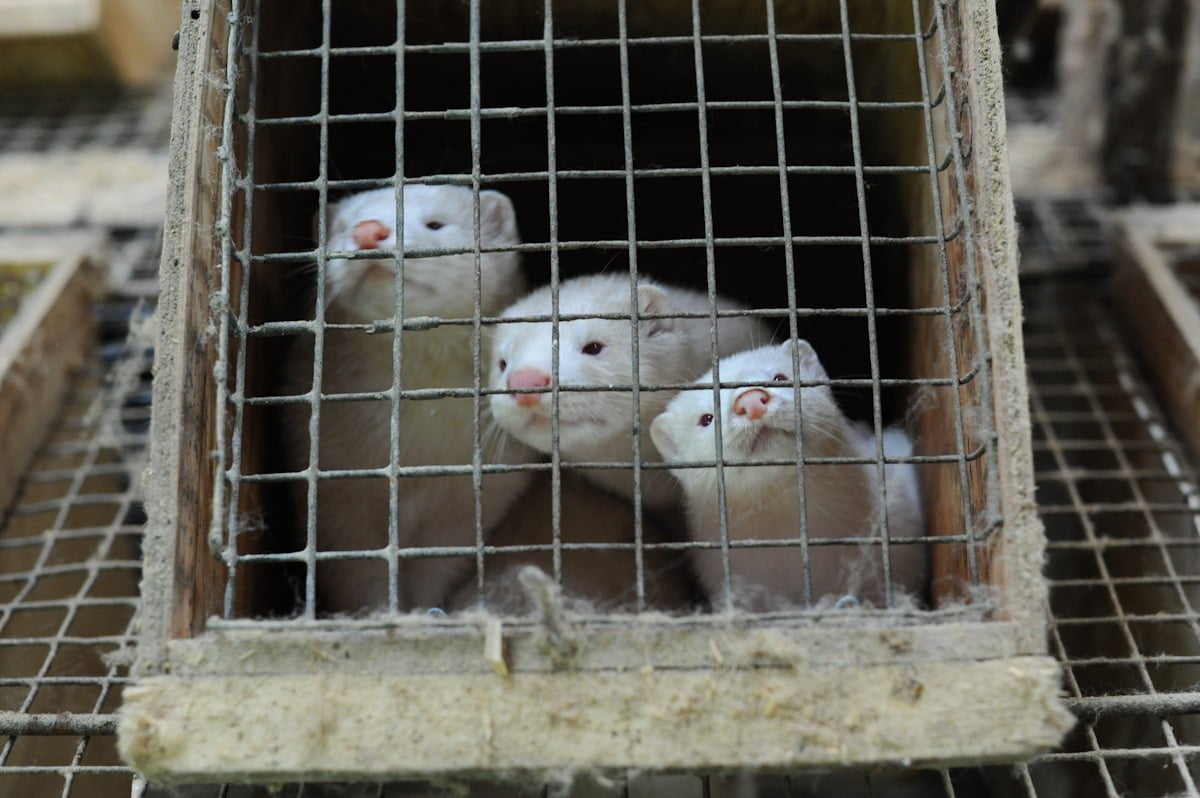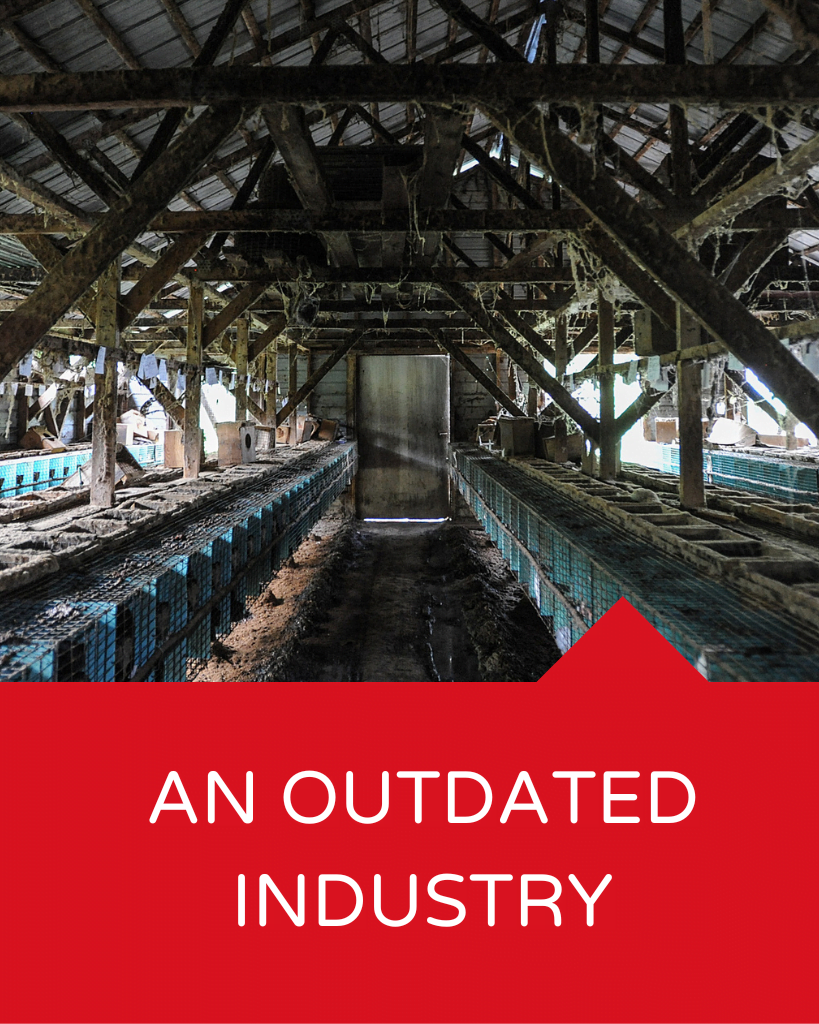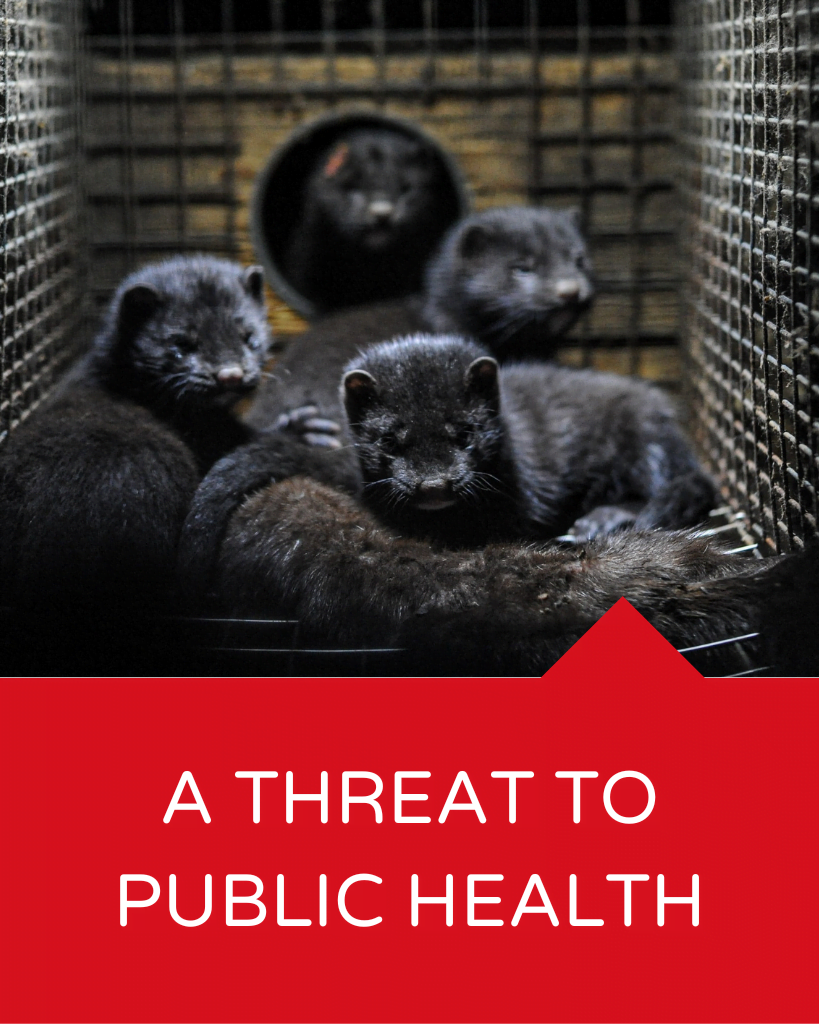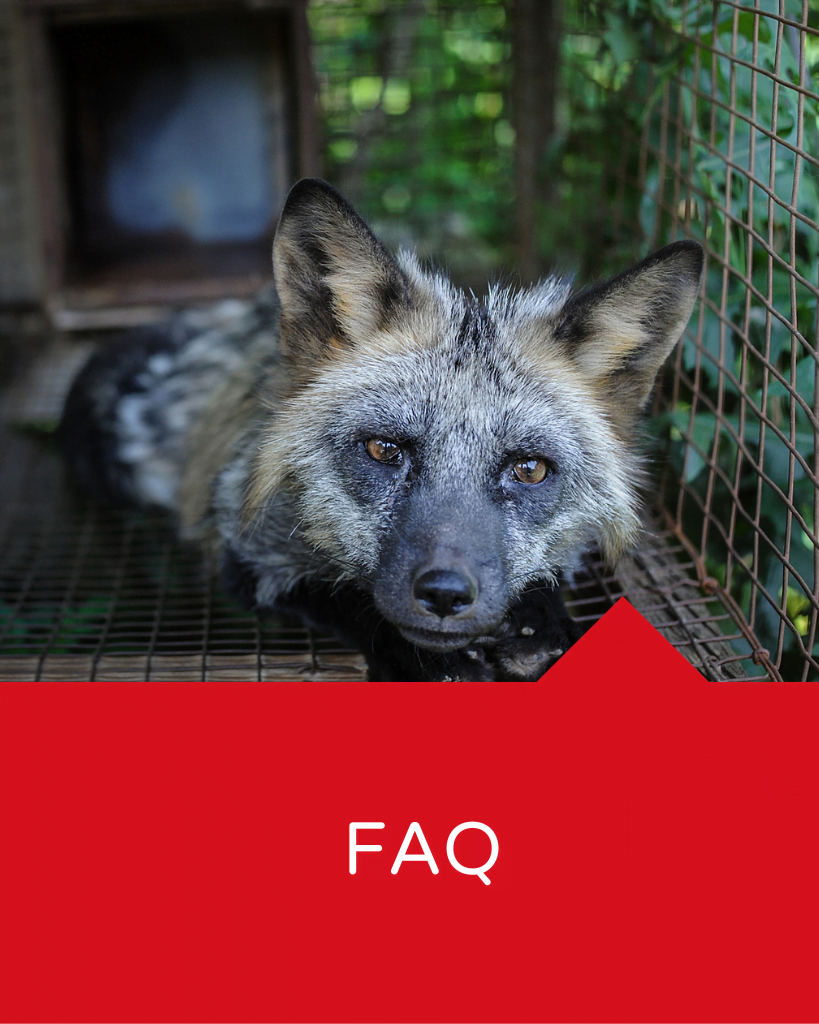A life of suffering
In Canada, over three million animals are killed every year for their fur, with the majority raised in captivity. In Quebec, foxes and minks farmed for their fur are kept in conditions that are harmful to their welfare and fail to meet their basic needs1. Animals are doomed to spend their lives in cramped cages, deprived of the possibility to express their most basic natural behaviours such as hunting, running, climbing, digging, swimming, exploring or even playing.
On these farms, foxes spend their entire lives caged in raised pens roughly one square metre in size, with wire mesh floors. In the wild, foxes roam widely over territories of several square kilometres and dig complex burrows in which they seek shelter and give birth.
Similarly, minks are kept in cramped cages—sometimes with floorspace as small as two standard sheets of paper—without access to water to swim in2. This is despite research showing that these semi-aquatic animals suffer as much stress from being unable to swim as they would if deprived of food. In the wild, minks are solitary animals; in fur farm sheds, hundreds or even thousands are crammed into cages piled one on top of the other. In their natural environment, minks run several kilometres every day and spend much of their time diving and swimming, activities they are deprived of in captivity.

Animals raised on fur farms are essentially wild animals, and they are very maladjusted to captivity. Hardly domesticated, they have an innate fear of humans; but on a fur farm, they cannot escape human contact. This fear, coupled with the inability to carry out their natural behaviours, causes frustration and stress for these animals and can cause serious animal welfare issues3.
Self-mutilation, infanticide, cannibalism, and stereotypies (repetitive behaviours with no apparent goal) are frequently observed in animals raised for their fur and reflect psychological distress4,5,6,7,8,9. Observers have reported that some animals spend more than a quarter of their waking lives manifesting abnormal behaviours such as turning around in circles or pacing back and forth in their cage.
Slaughter methods: a cruel ending
— Foxes are generally slaughtered by electrocution by passing an electric current between two electrodes, one placed in the animal’s mouth and the other in the rectum.
— Minks are asphyxiated with carbon dioxide, a method known to be especially aversive for this species10.
These particularly barbaric slaughter methods are primarily chosen because they avoid damage to the animals’ pelts. They are not outdated or old-fashioned methods, but standardized industry practices that are, in fact, codified by the National Farm Animal Care Council (NFACC11,12).









